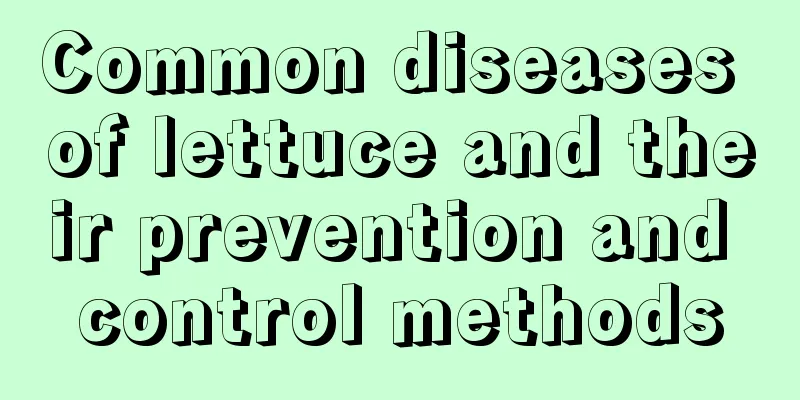Diseases and prevention methods of aster

Diseases of aster: ChlorosissymptomChlorosis is caused by infection with mycoplasma-like organisms (MLO). Mycoplasma-like organisms mainly survive on various perennial hosts and are mainly spread by leafhoppers, dodders, etc. Chlorosis is the most serious disease of aster. When infected, the leaves will turn light yellow, many broom-shaped branches will grow, and the flower color will gradually fade to light yellow-green. The whole plant becomes short, shrunken, and its growth momentum weakens. Prevention and treatment methodsIt is best to plant the plants in a net house to prevent infection by pathogens. You can spray 50% Marathon 1000 times solution or diazinon and other insecticides to control leafhoppers, thereby blocking the spread. If aster is infected with chlorosis, you can spray 4000 times diluted tetracycline or oxytetracycline for prevention and control. Diseases of aster: Botrytis cinereasymptomThis disease is prone to occur when aster grows in a high humidity environment of 20℃. It is a common disease of aster. Gray mold can harm the flowers and leaves of aster. In the early stage of the disease, water-soaked yellow-green or dark green spots appear, and then the spots gradually expand. In the later stage, the flowers and leaves fall off, and the plant dies. When the humidity in the environment is high, a gray powdery spore layer will appear on the leaves. Prevention and treatment methodsBe sure to place the chrysanthemum in a ventilated place, control the humidity of the environment, and avoid excessive water accumulation. Once the disease occurs, remove the diseased plants and leaves in time, and spray 1500 times diluted 50% prochlorperazine wettable powder or 1500 times diluted 50% chlorpyrifos. Diseases of aster: Fusarium wiltsymptomThe pathogen is the aster-specific form of Fusarium oxysporum, which can survive on diseased plants for many years and can spread through seeds and soil. When infected, the entire plant will wilt, the plant will become dwarfed, the leaves will turn black, the rhizomes will rot, and there will be pink or rose-colored conidia piles at the base. Prevention and treatment methodsWhen sowing, soak the seeds in 0.1% mercuric chloride solution for 30 minutes to kill the pathogens they carry. Rotate the areas or pots for raising seedlings and planting every year. Since the pathogens on the remains of diseased plants are spread through the soil, avoid mixing contaminated soil into the new soil during operation. In the early stage of the disease, use the medicine to irrigate the roots or spray, use 500 times of 50% carbendazim wettable powder, 0.25 kg per plant, irrigate once every 5-7 days, and repeat 2-3 times. You can also use 400 times diluted 40% carbendazim suspension, or 400 times diluted 50% methyl thiophanate wettable powder, or 200-300 times diluted 10% double-effect spirit aqueous solution, or 500 times diluted 25.9% anti-kuning. You can also use 100ppm of agricultural antibiotic "120" to irrigate the roots, which also has a certain preventive effect. You can also irrigate the roots with 800-1500 times potassium permanganate solution. Diseases of aster: rustsymptomWhen there are alternate host pine plants near aster, the disease is likely to occur and spread. Chlorotic spots appear on the leaves, and round, yellowish, powdery spore piles can be seen on the underside. Prevention and treatment methodsIn the early stage of the disease, spray 1500 times diluted 15% triadimefon wettable powder or 3000 times diluted 12.5% sulfamethoxazole. Diseases of aster: brown spotsymptomThe disease is severe in July and August in the north. After becoming infected, nearly circular purple-brown spots of varying sizes appear on the leaves at first, and then turn black or dark brown. In the later stage, the center of the lesion turns light gray and small black spots appear. When there are more spots on the leaves, the whole leaves turn yellow and dry. Prevention and treatment methodsRemove and destroy diseased leaves promptly. Spray 1000 times diluted 50% carbendazim wettable powder, or 500-700 times diluted 80% mancozeb wettable powder, or 1% Bordeaux mixture, or 500 times diluted 755 thiophanate-methyl for prevention and control, spray once every 7-10 days. |
<<: Common diseases and prevention methods of creeping sedge
>>: Diseases and their control of banana
Recommend
How to reproduce triploid bananas? Natural reproduction method
Triploid banana reproduction method Triploid bana...
When the weather gets cold, these 4 kinds of flowers need to be moved back into the house, as their leaves will turn yellow when the wind blows!
In order to prevent everyone’s plants from freezi...
Key points for grape management in January
Grapes generally prefer warm environments and hav...
The leaves of azalea are turning black and dry. Can azalea still survive if all its leaves fall off?
1. Can I still live? Even if azalea loses all its...
The flower language and meaning of freesia, and what are the legends?
1. The meaning of the flower language of freesia ...
Chlorophytum cutting time and method
Chlorophytum cutting time Chlorophytum can be pro...
How to cultivate rhinoceros beetle
Compared with other insects, rhinoceros beetles a...
The correct way to eat papaya, how to eat papaya
1. Eat it raw Pick out a healthy and ripe papaya,...
What are the common varieties of African Impatiens?
Common species of African balsam stress This vari...
What to do if the fiddle-leaf fig loses its leaves? This will make the leaves healthier!
Reasons for leaf drop Generally speaking, it is n...
This flower is shade-tolerant and cold-resistant. If you cut the branches and put them in a vase, it will bloom in 3 days. Relatives and neighbors are scrambling to get it!
Holly North American holly has been extremely pop...
How to divide the weeping angel
Time for division of Dripping Guanyin The weeping...
Cultivation methods and precautions of white chrysanthemum
How to grow white chrysanthemum temperature The s...
During the 7-day National Day holiday, you can do some flower cuttings and turn one pot of plants into multiple pots!
For those friends who are not planning to go out ...
What fertilizer is best for Jade Kylin?
Fertilization time for Jade Qilin It is generally...









